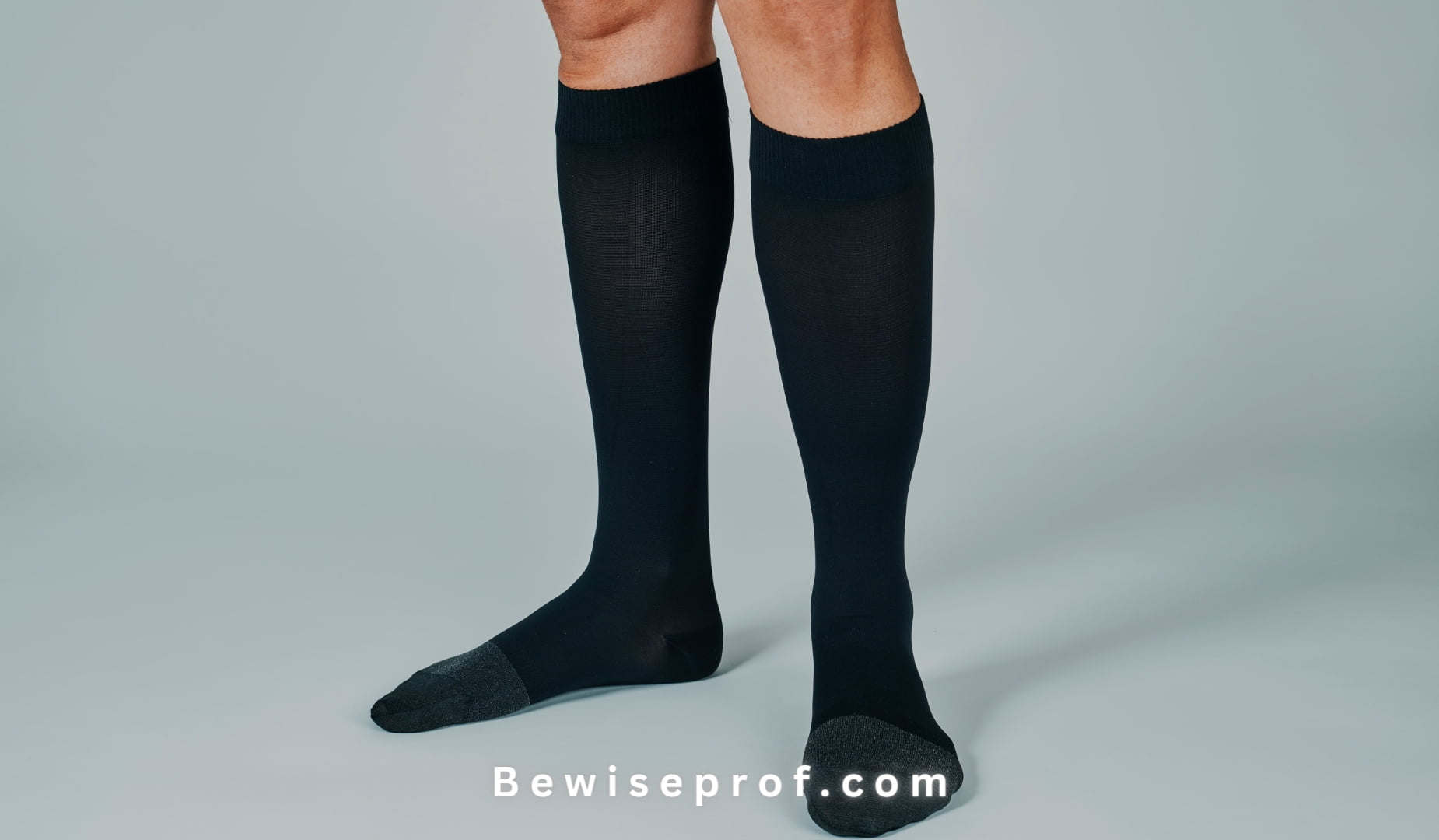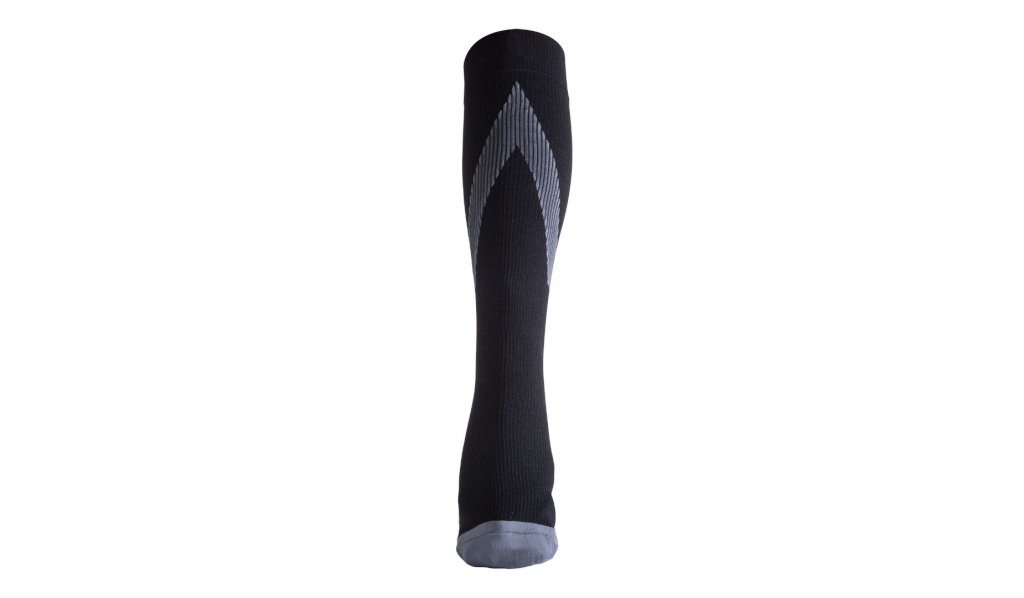If you spend a lot of time sitting or standing, have poor circulation, or experience pain and swelling in your legs and feet, you may be considering compression socks. Designed to apply pressure to your legs, ankles, and feet, they can help with improved circulation, reduced swelling, discomfort relief, and improved recovery time after more intense physical activities.
Once you start looking into them, however, you’ll realize that there are several different kinds of compression socks. The two most common are graduated compression and regular compression, so let’s take a closer look at the differences. Elevate your sock game with Custom Sock Lab, where you can turn compression socks into a personalized style statement tailored just for you.
What Should I Know About Graduated Compression Socks?
Graduated compression socks provide a higher level of compression at the ankle, which gradually decreases as it moves up the leg. This graduated compression helps improve blood circulation by pushing blood back up toward the heart and reducing blood pooling in the legs. Graduated compression socks are often recommended for people with conditions like varicose veins, deep vein thrombosis, or lymphedema.
These compression socks are generally considered more effective in improving circulation and reducing swelling, particularly in the lower leg and ankle area. However, the level of compression required may depend on the individual’s specific needs and medical conditions, so it’s important to consult with a healthcare professional before using compression socks. Getting a prescription to ensure your socks are fitted properly and have the appropriate pressure level for you is wise.
What Should I Know About Regular Compression Socks?
Regular compression socks, or nonmedical support hosiery, provide the same level of compression throughout the entire sock. They are typically designed for general use and may not provide the same level of support and compression as graduated compression socks.
That’s not to say they don’t have benefits because they can help relieve your achy, tired legs during a long day at work. Also, as an added bonus, you don’t need a prescription for regular compression socks.
Graduated Compression Benefits
Graduated compression socks can provide several benefits, including the following.
Improved Blood Circulation
Graduated compression socks provide more compression at the ankle, which helps to improve blood circulation, reducing swelling, fatigue, and discomfort in the legs.
Reduced Muscle Soreness
During and after exercise, muscles can become sore due to inflammation and microtears. Graduated compression socks can help reduce muscle soreness and fatigue by improving blood flow and reducing inflammation.
Prevention of Blood Clots
Graduated compression socks can help reduce the risk of blood clots in the legs, particularly in people who are immobile for extended periods, such as during long flights or after surgery.
Varicose Vein Prevention and Treatment
Graduated compression socks can help prevent and treat varicose veins by improving circulation and reducing the pressure on the veins in the legs.
Lymphedema Management
Graduated compression socks can help manage lymphedema, a condition characterized by swelling in the arms or legs due to a blockage in the lymphatic system.
Improved Athletic Performance
Some athletes use graduated compression socks to improve their performance during exercise by reducing muscle vibration, improving circulation, and reducing fatigue.
Who Shouldn’t Use Compression Socks?
While compression socks are generally considered safe for most people, some individuals should not use them without consulting a healthcare professional first. These include people with the following conditions:
- Arterial Disease: Compression socks can increase blood flow and may worsen symptoms in people with arterial disease or peripheral artery disease (PAD).
- Diabetes: People with diabetes may have decreased circulation, and compression socks can affect blood flow to the feet.
- Skin Infections or Allergies: Compression socks can cause skin irritation or worsen certain existing skin infections. People with skin infections or allergies should avoid using compression socks until the skin has healed.
- Deep Vein Thrombosis (DVT): While compression socks can help prevent blood clots, they should not be used to treat an existing DVT.
- Congestive Heart Failure: Compression socks can increase blood flow and may worsen symptoms in people with congestive heart failure.
- Pulmonary Edema: Compression socks can increase blood flow and may worsen symptoms in people with pulmonary edema.
Are Compression Socks Right for Me?
The main difference between graduated compression socks and regular compression socks is the level of compression they provide and how it is distributed. Compression socks can be a helpful tool for managing a variety of conditions and improving athletic performance, so it’s worth consulting with your doctor about whether it’s right for you.

